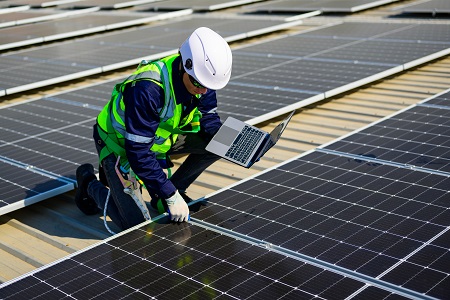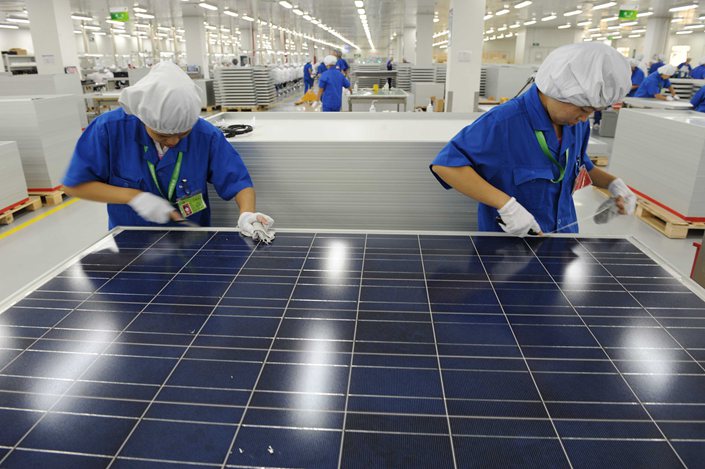Top Guidelines Of Affordable Solar Panels Pa
Top Guidelines Of Affordable Solar Panels Pa
Blog Article
Solar Power Installation Services PA: Our Firm Focuses On The Installation And Management Of Photovoltaic Energy Systems
History and Development of Solar Panel Companies
The beginning of photovoltaic panel business can be traced back to the 1800s when Alexandre Edmond Becquerel discovered the photovoltaic effect. Would he have thought of how his discovery would reinvent the method we harness energy?
Early Starts

In 1954, Bell Labs established the very first practical solar battery. This marked a considerable milestone in the history of solar power. They were initially used to power area satellites, but who understood this was just the beginning?
Evolution and Development
- In the 1970s, an energy crisis resulted in increased interest in eco-friendly energy sources, including solar energy.
- By the 1990s, advancements in innovation and increasing environmental awareness resulted in the development of solar panel business globally.
A New Era
As we went into the 21st century, the solar market saw an exponential development. The demand for tidy and renewable resource caused a brand-new period in the photovoltaic panel market.
Interesting Facts
- The world's very first solar energy station was integrated in 1982 in Hisperia, California.
- By 2019, solar energy had ended up being the world's fastest-growing source of power.
The journey of solar panel companies has been exceptional, hasn't it? The future holds tremendous capacity, with continuous developments leading the way for a sustainable future. Can we envision a world powered completely by solar energy?
Moving on
Today, solar panel companies continue to innovate, pursuing more efficient and economical solutions. The advancement of solar energy has actually come a long method, and yet, the journey has just started.
The Core of Solar Panel Production
Ever question what enters into developing those shiny, sun-loving solar panels? The process is as impressive as completion product (Commercial Solar Panels PA). High-purity silicon, the main ingredient in photovoltaic panels, goes through various transformations to guarantee its efficiency and durability
From Sand to Silicon
Crystalline silicon, the foundation of the majority of solar panels, stems from easy sand. It's a fascinating journey, isn't it? The sand goes through a high-temperature response with carbon to form silicon. This isn't simply any silicon. The silicon used in photovoltaic panels is "solar-grade," with a purity of 99.9999%. It's this purity that makes it possible for the panels to efficiently convert sunlight into power.
Ingot Development
When the silicon is pure enough, it's time to form ingots. Picture a big, cylindrical block of solid silicon. How is this achieved? Through a procedure called Czochralski process, where the silicon is melted and after that gradually recrystallized. It's a sluggish dance of science, leading to a solid item that is practically as pure as the raw silicon itself.
Slicing into Wafers
The ingots are then sliced into wafer-thin pieces, like slicing a loaf more info of bread. Each piece is a possible solar battery, waiting to harness the power of the sun. Did you understand that the silicon wafers are only about 200 micrometers thick? That has to do with half the thickness of a human hair! The procedure requires precision and perseverance, however the outcome is a set of wafers all set to be turned into solar cells.
Producing Solar Cells
With the wafer all set, it's time for the magic to occur. The silicon wafer is 'doped' with other components like phosphorous and boron to develop an internal electrical field. It's this field that makes it possible for the conversion of sunlight into electrical power. Complex, isn't it?
Assembly and Quality Control
Solar cells resemble puzzle pieces that come together to form a photovoltaic panel. The cells are soldered together in a grid-like pattern, then covered with a protective layer of glass. The final action includes strenuous quality assurance checks. It's vital that every solar panel carries out at its peak, would not you agree?
Insider Pointer
Always keep in mind that even the most efficiently made photovoltaic panel can lose performance due to dirt and particles build-up. Routine cleansing can significantly improve your panels' performance.
Comprehending the Environmental Impact of Solar Panel Companies
Ever contemplated the ecological footprint of a photovoltaic panel company? Green innovation, such as solar, has transformed our energy landscape, but what about the behind-the-scenes effect?
The Production Process: A Double-Edged Sword
The manufacturing process for solar panels demands a considerable amount of energy. This procedure, referred to as 'em bodied energy', can be considered as a type of 'energy debt'. It's a little like borrowing today's sunshine to power tomorrow's energy requirements. But fret not, the energy repayment time is typically much shorter than you 'd believe!
- The energy payback period for photovoltaic panels is typically 1-4 years.
- After this period, the energy produced is essentially carbon-free.

Life After Decommission
And what takes place when a photovoltaic panel reaches completion of its life expectancy? Can it just be tossed into the trash? No, that would not be extremely green, now, would it?
A feasible option is recycling. While solar panel recycling is still in its infancy, it holds a world of potential. Recycling not only keeps materials out of land fills however likewise reduces the requirement for new raw products.
Responsible Sourcing: More Than A Buzzword
Where does the silicon originated from, you ask? Regrettably, the market's need for silicon and unusual minerals can lead to devastating mining practices. Accountable sourcing is therefore vital to reduce harmful ecological effects.
Lowered Carbon Emissions: The Larger Picture
Let's not forget the larger picture: solar energy considerably reduces carbon emissions. As soon as set up, photovoltaic panels produce clean, renewable energy, offsetting their preliminary manufacturing footprint.
In other copyright, the environmental effect of solar panel business is an intricate concern. With responsible practices, the promise of a cleaner, greener future is well within our grasp.
Financial Performance and Market Share of Solar Panel Companies
Ever questioned why some photovoltaic panel companies - Solar Panel Company outperform others in the market? What sets them apart? The key lies in their financial performance and market share
Financial Performance: An Important Indication
Financial performance plays a pivotal role in the success of any organization. For solar panel business, it's no different. Strong monetary performance makes it possible for these business to buy advanced innovation, research, and development, thus producing high-quality, effective photovoltaic panels.
How do they attain this? With a focus on expense effectiveness and strategic investments. Business that handle to reduce production costs without jeopardizing on quality tend to fare better in the market.
Market Share: A Measure of Success
Market share, on the other hand, is a direct reflection of a business's popularity among customers. A high market share means more homeowners are picking their photovoltaic panels over competitors.
So, what's the secret dish for acquiring a larger market share? It boils down to customer fulfillment and brand credibility. Companies that focus on client needs and keep a positive brand name image are more most likely to capture a bigger share of the marketplace.
- Consumer Satisfaction: Solar panel companies that deliver trusted items and extraordinary customer support tend to have higher consumer complete satisfaction rates.
- Brand Reputation: A strong brand name track record is developed in time through consistent delivery of quality services and products.
Financial Efficiency and Market Share: The Symbiotic Relationship
Surprisingly, the relationship between monetary efficiency and market share is not one-sided. They feed off each other. A strong monetary performance can increase a business's market share, while a high market share can improve financial efficiency.
As a solar panel company, stabilizing these two elements is crucial for long-lasting success. A business that overlooks either of them might discover it difficult to preserve its position in the competitive solar market.
The Takeaway
So, what does all this mean for you? Whether you're a homeowner looking to set up solar panels or an investor eyeing the solar industry, comprehending the financial efficiency and market share of photovoltaic panel business is essential. They are essential indicators of a business's health and potential for future growth.
Report this page